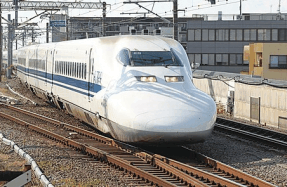
This article is in two parts.
Part 1 covers the history of the building of the Langbian Railway, which includes the rack-and-pinion sections up to Dalat, and it incorporates timetables as the line progressively opened. In addition, a press report is included about the inauguration of the first rack-and-pinion section which describes the journey taken all the way from Saigon and gives an insight into what a passenger from Saigon would have experienced on their journey and the sense of the occasion.
Part 2 will include an overview of the line, early operational statistics, a discussion about the impact of the Langbian Railway, plus what can be seen today in terms of both the steam locomotives and the infrastructure.
The history of the Langbian Railway from 1939, and the start of WW2, until 1975, and the end of the Vietnam / American war, is the subject of ongoing research.
Introduction
The Langbian Railway (also spelt Lang-Bian or Langbiang) was a branch line from the trans-Indochina main line in central Vietnam (Protectorate of Annam). The junction for this branch line was at Tourcham / Tháp Chàm, which is 322km from Saigon and close to Phan Rang on the coast. Its terminus was at Dalat on the Langbian plateau (+-1500m).
It took 34 years to complete the Langbian Railway which was authorized in 1898 and saw trains over its full length (84km) for the first time in 1932. Even then work would continue with the building the terminus at Dalat which was not completed until 1938.
The History of the Building of the Langbian Railway
The story of the building of the Langbian Railway is tied to the building of Dalat itself and, to some extent, to the building of the roads to Dalat.
Dalat was seen by the French colonial authorities as a “hill station” for Saigon in the same mould as Simla for Delhi in India for example, a place of rest and recuperation (a sanatorium) away from the stifling climate of the capital.

A test station, with a meteorological observatory and a vegetable garden, was established on the Langbian plateau in October 1891. This very quickly demonstrated the mildness of the climate on the plateau, the quality of its land for market gardening and its suitability as a location for a sanatorium. By the beginning of 1893, a first path was traced from Phan Rang up to the Langbian plateau, though this only became a practicable route in 1899.
Dr Alexandre Yersin, Swiss-French physician and bacteriologist (co-discoverer of the bacillus responsible for the bubonic plague) who is still fondly remembered in Vietnam to this day, is credited with discovering the location for Dalat in 1897. Two years later, in 1899, he would travel to the Langbian Plateau with Paul Doumer, the Governor General of Indochina (later to become President of France). It was in 1900 that Doumer selected Dalat as the location for the “hill station”, however, the initial momentum to establish it appears to have been lost when he left Indochina in 1902.
The construction of the Langbian Railway was authorized as part of the Saigon to Khanh-hoa (Nhatrang) line, along with five other lines totaling some 2,000km, on 25 December 1898, as part of a loan of 200,000,000F. The list of lines was prioritized and the Saigon to Khanh-hoa line, including the Langbian branch, was fifth and consequently of relatively low priority. Although originally the Langbian Railway conceptually branched off the coastal mainline near Phan Rang, studies in 1900-02 revealed serious difficulties in crossing the Varella Massif north of Khanh Hoa (the extension to






